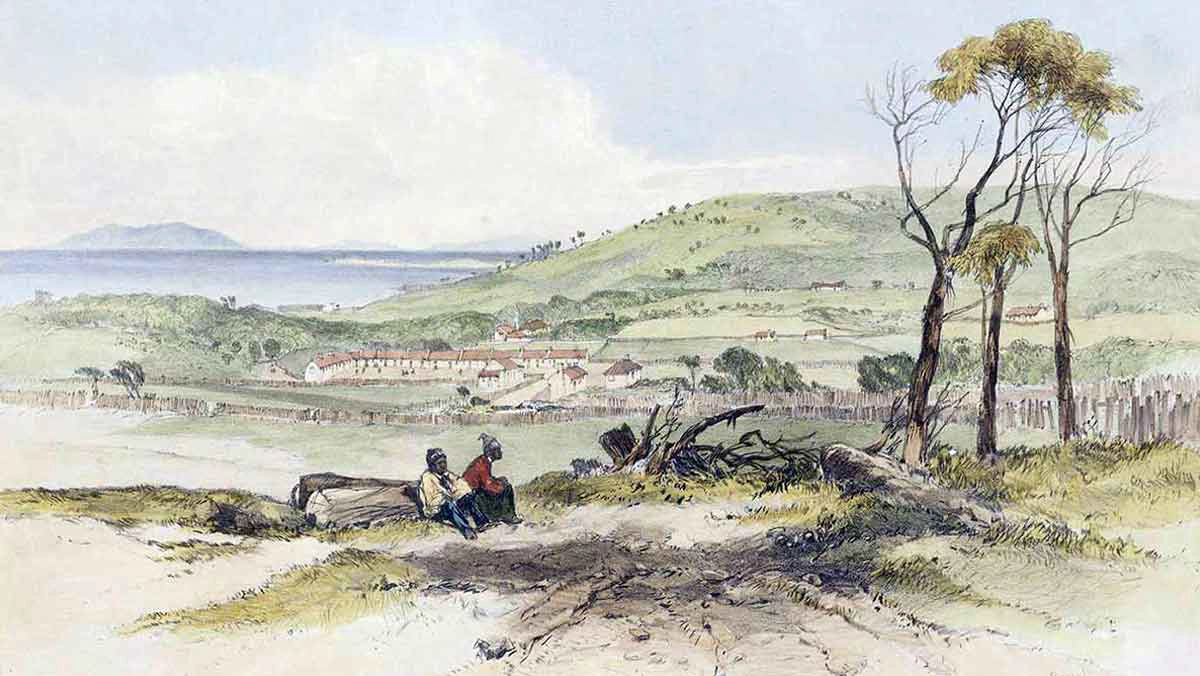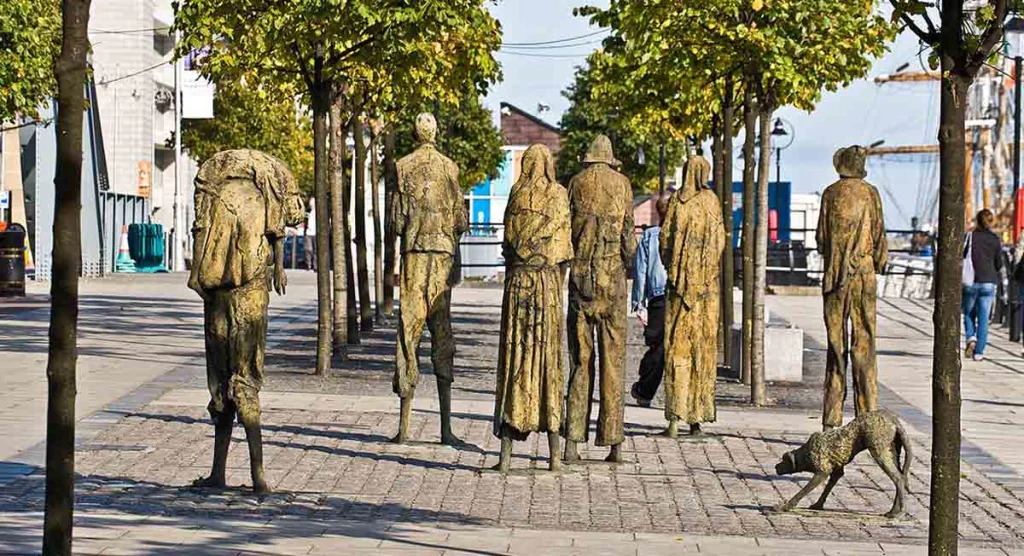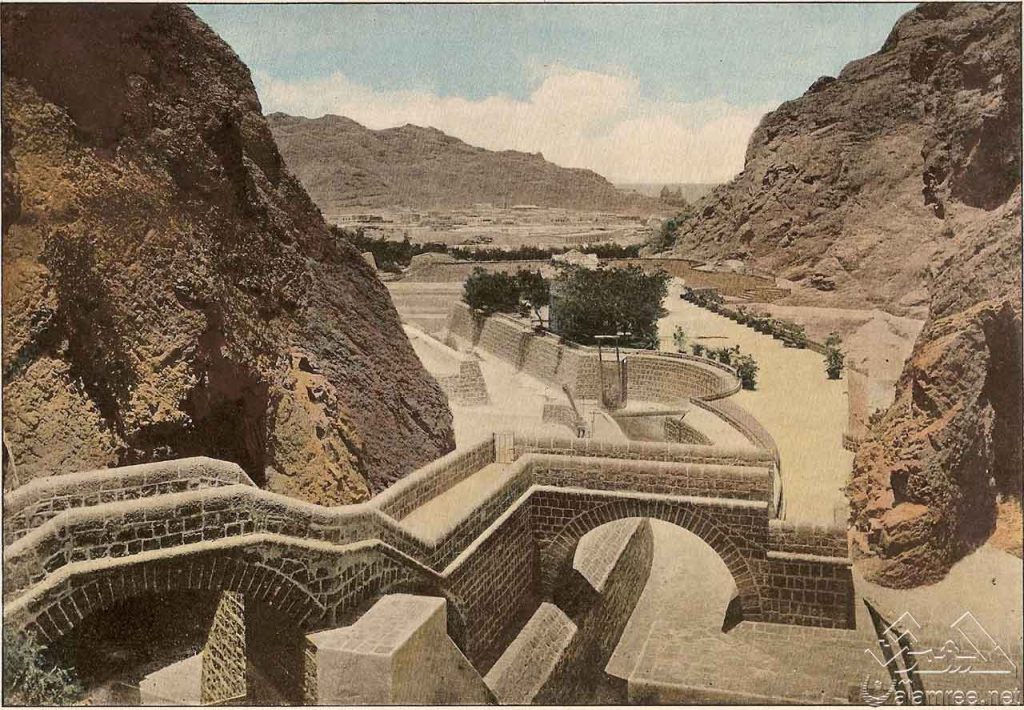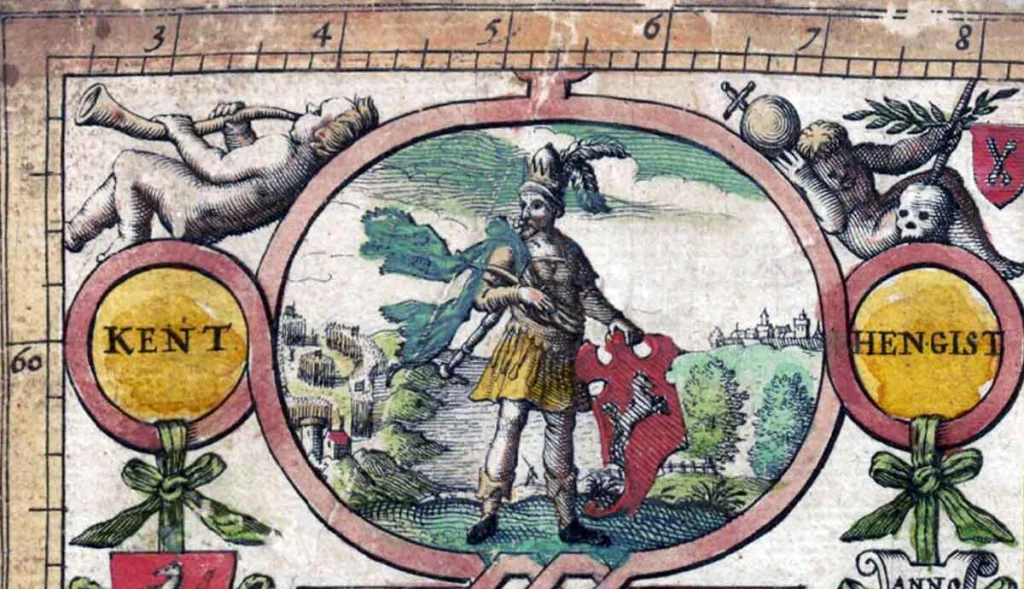When the Black War ended in 1832, colonial authorities claimed “peace” in the Settled Districts—but for Aboriginal Tasmanians that peace meant removal. Survivors—men, women, and children—were rounded up, imprisoned, or captured. Officials then made their choice: deport them to Flinders Island in Bass Strait, to a new station called Wybalenna. Sold as protection and “civilization,” Wybalenna soon became a place of control, illness, and death. When it finally collapsed, the community was moved again—to Oyster Cove, a site already deemed unfit for convicts. It became the second catastrophe.
Wybalenna: A Promise of Care, a System of Control

Beginning in the mid-1830s, those seized by the Black Line and those who “surrendered” to George Augustus Robinson were sent to Wybalenna. Robinson took charge as superintendent in October 1835 and used the station to model an assimilation regime later exported across Australia.
Daily life was minutely regulated. Adults were treated as wards: morning inspections, enforced cleanliness checks, women’s sewing classes, Christian services, and strict domestic routines. Robinson refused physical punishment, but his administration separated children from parents and sent them to the Orphan School in Hobart to be trained as “proper” Christians. The message was clear: culture and kinship would be replaced by discipline and doctrine.
Despite promises that customs would be respected, authority flowed one way. The governor of Van Diemen’s Land, Sir George Arthur, stacked Wybalenna with officials—surgeon, catechist, soldiers—and convict laborers to build huts, gardens, and stockyards. Within these confines, some families still found pockets of freedom, camping in the bush, hunting kangaroo and wallaby, painting with ochre, and holding ceremonies. But the system’s design—crowding, surveillance, food and water issues—bred disease.
Sickness, Grief, and Flight

Wybalenna’s health standards were dire. In 1837 alone, 29 people died of gastroenteritis and pneumonia—conditions linked to poor sanitation and likely bacterial contamination. Leaders and elders were among the dead: guerrilla commander Tongerlongter (1790–1837), Montpelliata’s widow (1790–1836), and Kartiteyer, son of Mannalargenna (1770–1835). As the toll mounted, some families fled into the bush to survive on their own.
Another outbreak—influenza in 1839—killed eight more. By the time Robinson left that April, 59 of the original 123 people brought to Flinders Island had died.
Who Was Taken to Wybalenna?

The community at Wybalenna was diverse, drawn from multiple nations and clans:
- The largest group—nearly 50 people—came from the North West and South West nations (including Truganini, 1812–1876).
- Over 30 were from the North East, North Midlands, and Ben Lomond nations.
- At least 20 came from Big River and Oyster Bay nations.
Some, like Mannalargenna, Tongerlongter, and Montpelliatta, had led resistance in the 1820s. Others had complex, shifting relations with Robinson. Eumarrah (1798–1832), for example, pressed Robinson for guarantees that his people would be independent if they moved—promises that proved hollow.

At Wybalenna, colonists often renamed leaders “kings” and warriors after British heroes. Historian Lyndall Ryan notes Robinson’s tactic: by mimicking British ranks and titles, he aimed to recast Aboriginal authority in imperial terms. Renaming was meant to be the first step in turning Aboriginal men and women into British subjects. Yet community members resisted, maintaining ceremony and kin ties and even developing a lingua franca to communicate across nations and with the catechist, Robert Clark.
From Wybalenna to Oyster Cove: Out of the Frying Pan

Conditions worsened after Robinson’s departure. Complaints piled up against the next manager, Dr Henry Jeanneret. In 1846, Walter Arthur (1821–1861) and seven others petitioned Queen Victoria over brutality; London’s under-secretary James Stephens recommended removal back to Van Diemen’s Land.
In 1847, Wybalenna was shut. Survivors—14 men, 23 women, and 10 children—were transferred to Oyster Cove, 35 miles south of Hobart on Oyster Bay Nation land. They arrived hopeful, dancing and holding ceremonies that first night, believing they were closer to home. But Oyster Cove was a former convict station abandoned for poor health. It was, in effect, another death trap.
At first, people could row to Bruny Island (Nuenonne country) to gather shells and mutton-bird eggs, and fish the D’Entrecasteaux Channel. A 700-hectare hunting area was set aside for wallaby, wombat, and possum. Yet the state again removed children—five boys and five girls—to the Queen’s Orphan Asylum in Hobart. No school was ever opened at Oyster Cove. Families were broken for a second time.
Decline, Defiance, and Loss

The numbers tell the story. By the end of 1854, only 17 of the original Oyster Cove arrivals were alive; by 1859, just 14 (five men, nine women). Among the best known were Truganini, William Lanney, Mary Ann Arthur, and Walter George Arthur. Walter Arthur pushed relentlessly for better conditions; Governor Sir Henry Fox Young eventually granted him a 3-hectare block near the station, where he and his family built a cottage and even hung a portrait of Queen Victoria—an emblem of the divided worlds he was forced to straddle. He died in 1861, likely lost overboard returning from Hobart. William Lanney, often called the last “full-blood” male, died in 1869.
“The Last Survivor” and the Long Afterlife of a Place

After Lanney’s death, only Truganini and Mary Ann remained at Oyster Cove; Mary Ann died in 1871. Truganini—of the Nuenonne clan, born at Recherche Bay in 1812—lived at Oyster Cove until devastating floods in 1874, then stayed in Hobart with Mrs Dandridge, the former superintendent’s wife. She died in 1876. Though long misrepresented as “the last Tasmanian,” she was in fact the last survivor of the Oyster Cove community, not the last person of Aboriginal Tasmanian ancestry.
Oyster Cove itself closed in 1874. In 1981, part of the site (about 30 hectares) was declared historic; in 1984, the Tasmanian Aboriginal community reclaimed it as putalina; in 1995, the land was formally returned; since 1999, it has been an Indigenous Protected Area managed by Tasmanian Aboriginal Centre Rangers.
Today, the island increasingly acknowledges its first peoples. Under Tasmania’s Aboriginal and Dual Naming Policy, dozens of places now carry dual names—kunanyi / Mount Wellington among the most prominent—and the island is often referred to as lutruwita / Tasmania in honor of its Traditional Custodians.
Why This History Matters

Wybalenna and Oyster Cove were not anomalies; they were systems—designed to displace, dismember families, remake identities, and extract obedience under the language of care. And yet, through language, ceremony, and kinship, people resisted—on Flinders Island, in the bush, and at Oyster Cove. The survival of community, memory, and Country speaks to a resilience that the missions tried and failed to erase.
Further reflection: When we use names like Wybalenna and putalina, we recover more than labels—we acknowledge whose houses, whose waters, and whose stories these places have always held.











































